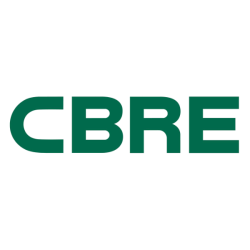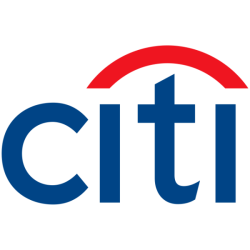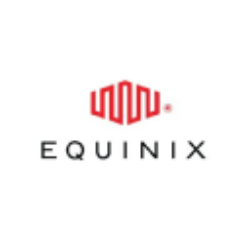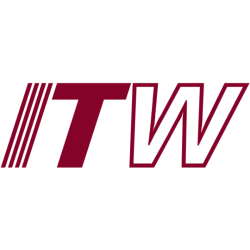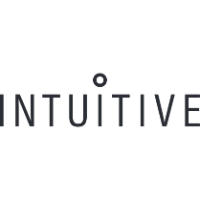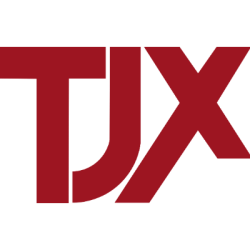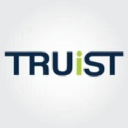Updated: June 7, 2025

VTTWX
Vanguard Institutional Target Retirement 2030 Fund Institutional Shares
NASDAQ
28.83
-0.24

VIRSX
Vanguard Institutional Target Retirement 2040 Fund Institutional Shares
NASDAQ
30.89
-0.36

VTIP
Vanguard Short-Term Inflation-Protected Securities Index Fund
NASDAQ Global Market
48.87
0.01
We have not found the stock you are looking for

Vanguard Intermediate-Term Corporate Bond Index Fund
NASDAQ Global Market:
VCIT
Loading
Loading
Loading
Ticker
Loading
Market Cap
Loading
Revenue
Loading
EPS
Loading
PE Ratio
Loading
Volume
Loading
Dividend
Loading
Week Range
Loading
Beta
Loading
Frameworks
Name
Score
Company Overview
Loading
Vanguard Intermediate-Term Corporate Bond Index Fund
Country
Loading
Founded
Loading
IPO Date
Loading
industry
Loading
Employees
Loading
CEO
Loading
Top News
Economic Moat Analysis
-
Analysis
-
Analysis
-
Analysis
-
Analysis
-
Analysis
-
Analysis
-
Analysis
-
Analysis
-
Analysis
-
Analysis
-
Analysis
-
Analysis
-
Analysis
-
Scoring
- Information
1. 10Y Growth Analysis
Score: 6.6 (Balanced)
The overall score of 6.6 reflects VCIT's minimal to steady projected growth, with challenges related to interest rate fluctuations and market volatility in the short term. However, the fund's diversified portfolio and potential benefits from economic recovery and demographic trends provide a foundation for steadier growth in the long term.
2. Scenario Analysis
Score: 7.2 (Strong)
The overall score reflects a company that is resilient in most scenarios, demonstrating adaptability and strategic foresight in navigating economic, technological, and regulatory challenges. However, certain stress scenarios highlight potential vulnerabilities that require ongoing strategic planning and risk management. Score without stress scenario: 7.6 Resilient
3. Risk & Opportunities
Score: 7.0 (Strong)
The overall score reflects a balanced outlook for VCIT, with a moderate level of risks primarily associated with macroeconomic factors and interest rates. However, the ETF's strong opportunities, particularly in terms of income stability and diversification, position it favorably for investors seeking steady returns amid potential market fluctuations.
4. Economic Moat
Score: 6.0 (Balanced)
VCIT demonstrates strong cost advantages and efficient scale, supported by broad market coverage and liquidity. However, switching costs are low, and network effects are not as pronounced.
5. Business Model
Score: 7.7 (Strong)
The overall score of 7.7 indicates a strong business model with minor weaknesses. VCIT's value proposition is well-aligned with investor needs, focusing on diversification, income generation, and risk management. Its distribution channels and customer relationships are robust, supported by a strong brand and strategic partnerships. However, the heavy reliance on management fees and market conditions for revenue growth presents a potential area for improvement.
6. Management Analysis
Score: 8.0 (Strong)
The overall score reflects a competent management team with a strong track record in leadership quality and strategic execution. While there is room for improvement in areas such as innovation, the team has demonstrated effective decision-making and adaptability in a rapidly changing market environment.
7. BCG Matrix
Score: 6.6 (Balanced)
The overall score reflects a balanced portfolio with strong market leaders in growth sectors and stable cash-generating products. However, some segments struggle with market presence and face challenges that require strategic focus.
8. SWOT Analysis
Score: 7.0 (Strong)
The overall score of 7 out of 10 reflects a strong position for VCIT, with significant strengths in diversification, stability, and income, offset by some concerns regarding interest rate sensitivity and economic factors. The opportunities presented by economic recovery and stable interest rates provide further potential for positive performance, while threats from rising rates and geopolitical risks warrant careful monitoring.
9. Porter's 5 Forces
Score: 7.0 (Strong)
VCIT operates in a stable and relatively low-risk environment with minimal threats from new entrants and substitutes. Supplier and buyer power are moderate but manageable, while industry rivalry is balanced by differentiation and brand loyalty.
10. PESTLE Analysis
Score: 6.5 (Balanced)
This score reflects a generally balanced macro-environment with both challenging and favorable conditions. Political and legal factors present some uncertainties, while economic and technological advancements offer positive opportunities. Social and environmental factors remain neutral, indicating a stable but cautious investment outlook.
11. ESG Analysis
Score: 0.0 (No rating available)
[Insert a brief explanation of the overall score]
12. Company Milestones
Score: 7.0 (Strong)
No summary available.
Final Overall Score
Score: 6.6 (Balanced)
The Final Overall Score of 6.6 for the stock ‘VCIT’ suggests a moderately positive performance and outlook. This score indicates that VCIT, which typically represents a Vanguard Intermediate-Term Corporate Bond ETF, has demonstrated solid performance metrics across various evaluation frameworks. **General Performance:** The score reflects a stable performance relative to its benchmark, with consistent returns and moderate volatility. This indicates that VCIT has been a reliable investment for those seeking exposure to the intermediate-term corporate bond market. **Strengths:** The strengths contributing to this score likely include a well-diversified portfolio of investment-grade bonds, which offers a balance between risk and return. The ETF’s expense ratio may also be a key strength, as Vanguard is known for its cost-effective management, potentially leading to better net returns for investors. **Outlook:** The moderately positive score suggests a cautiously optimistic outlook for VCIT. While economic conditions and interest rate environments can impact bond performance, the ETF’s diversified holdings and focus on intermediate-term bonds may provide resilience against market fluctuations. Investors might expect steady income generation with moderate capital appreciation potential. Overall, the score of 6.6 indicates a solid, albeit not extraordinary, investment option, suitable for those looking to add stability and income to their portfolios through exposure to corporate bonds.
Future Outlook
To provide a future outlook for the Vanguard Intermediate-Term Corporate Bond ETF (VCIT), it’s important to consider several factors that can influence its performance. VCIT primarily invests in investment-grade corporate bonds with maturities typically between 5 and 10 years. Here are some key considerations for its future outlook: 1. **Interest Rate Environment**: As a bond ETF, VCIT’s performance is significantly influenced by interest rates. If interest rates rise, bond prices typically fall, negatively affecting VCIT. Conversely, if rates fall, bond prices generally increase, benefiting VCIT. Monitoring the Federal Reserve’s monetary policy and economic indicators, such as inflation and employment data, will be crucial. 2. **Credit Risk**: VCIT invests in corporate bonds, so the credit quality of its holdings is important. Economic conditions that lead to improved corporate profitability and lower default rates would generally be positive for VCIT. Conversely, an economic downturn could increase default risks, negatively impacting the ETF. 3. **Economic Outlook**: A stable or growing economy tends to support corporate credit markets, which would be favorable for VCIT. Economic indicators such as GDP growth, corporate earnings, and business investment can provide insights into the economic backdrop. 4. **Market Sentiment**: Investor appetite for risk can influence demand for corporate bonds. In risk-off environments, investors may prefer safer government bonds, while in risk-on climates, corporate bonds may be more attractive due to their higher yields. 5. **Inflation Expectations**: Inflation erodes the purchasing power of fixed-income returns. If inflation expectations rise, it could lead to higher interest rates and negatively impact bond prices, including those in VCIT’s portfolio. Overall, VCIT’s future outlook will depend on a combination of these factors. Investors should remain informed about macroeconomic developments, monetary policy decisions, and corporate credit conditions to assess potential risks and opportunities for VCIT. Diversification and regular portfolio reviews can help manage risks associated with bond investments.
3-Year Growth Prospects
Score: 5.5 – Minimal
– Interest Rate Sensitivity: VCIT is sensitive to interest rate fluctuations, which could impact short-term growth prospects.
Example: *The Federal Reserve’s recent interest rate hikes have led to increased volatility in bond markets, affecting bond ETFs like VCIT.*
– Market Volatility: Economic uncertainty and market volatility may hinder growth.
Example: *Geopolitical tensions and potential economic slowdowns have led to uncertain market conditions, impacting bond yields.*
– Stable Portfolio: Despite challenges, VCIT’s diversified portfolio of investment-grade corporate bonds provides stability.
Example: *The ETF’s investment in high-credit quality corporations provides a cushion against market fluctuations.*
– Yield Performance: Yield performance remains competitive compared to other fixed-income instruments.
Example: *VCIT’s yield is currently outperforming many other bond funds, making it an attractive option for conservative investors.*
– Inflation Impact: Inflationary pressures could erode returns, affecting growth.
Example: *Persistently high inflation could reduce the real returns on fixed-income investments such as those found in VCIT.*
5-Year Growth Prospects
Score: 6.8 – Minimal
– Economic Recovery: As the economy stabilizes, VCIT could benefit from an improved corporate bond market.
Example: *An anticipated economic recovery post-pandemic may enhance corporate earnings, benefiting corporate bond funds like VCIT.*
– Interest Rate Normalization: Potential normalization of interest rates might lead to a more predictable bond market environment.
Example: *As interest rates stabilize, bond price volatility may decrease, providing a more predictable growth trajectory for VCIT.*
– Risk Mitigation Strategies: Adoption of risk management strategies can enhance growth prospects.
Example: *VCIT’s strategic allocation to sectors with strong credit profiles can mitigate risk and enhance stability.*
– Demand for Fixed Income: An aging population may drive demand for fixed-income securities, supporting growth.
Example: *Increased retirement savings and demand for stable income sources could drive investor interest in VCIT.*
– Technological Advancements: Improved financial technology may lower transaction costs and increase ETF accessibility.
Example: *Advancements in trading platforms have made ETFs more accessible, potentially increasing investor inflow into VCIT.*
10-Year Growth Prospects
Score: 7.5 – Steady
– Long-Term Economic Growth: Sustained economic growth could lead to increased corporate profitability, benefiting bond markets.
Example: *A stable economic environment over the next decade may lead to stronger corporate performance, enhancing VCIT’s prospects.*
– Interest Rate Cycles: Navigating interest rate cycles effectively can lead to consistent growth.
Example: *Historically, bond markets have adjusted to interest rate cycles over longer periods, suggesting potential for steadier growth.*
– ESG Integration: Increasing focus on ESG criteria may enhance fund attractiveness.
Example: *Incorporating environmental, social, and governance factors could appeal to socially conscious investors, boosting demand for VCIT.*
– Demographic Trends: Aging demographics may continue to support demand for income-generating investments.
Example: *The growing retiree population may increase demand for stable income sources, benefiting bond-focused ETFs like VCIT.*
– Regulatory Environment: Favorable regulatory changes could support growth.
Example: *Potential regulatory reforms to improve market transparency and efficiency could benefit VCIT over the long term.*
Overall Score: 6.6/10
The overall score of 6.6 reflects VCIT’s minimal to steady projected growth, with challenges related to interest rate fluctuations and market volatility in the short term. However, the fund’s diversified portfolio and potential benefits from economic recovery and demographic trends provide a foundation for steadier growth in the long term.
Future Outlook
VCIT faces short-term challenges due to interest rate sensitivity and market volatility, resulting in minimal growth projections over the next three years. However, the ETF’s stability and competitive yield performance offer value to conservative investors. Over the next five to ten years, VCIT’s growth prospects improve, driven by economic recovery, demographic trends, and potential regulatory reforms. While risks remain, particularly related to inflation and interest rate cycles, VCIT is positioned for steadier growth, supported by its diversified portfolio and increasing demand for fixed-income investments. Investors should monitor economic indicators and interest rate trends to navigate these dynamics effectively.
Scenario 1: Economic Downturn
Score: 6.5 Mixed
– Reduced consumer spending: The company’s revenue may decline due to decreased consumer purchasing power.
*Example: Retail sales dropped significantly during the 2008 financial crisis, affecting many sectors.*
– Supply chain disruptions: Global supply chain issues can increase costs and delay production.
*Example: The COVID-19 pandemic caused widespread supply chain disruptions, affecting production timelines.*
– Lower investment in infrastructure: Reduced capital spending can limit growth opportunities.
*Example: During economic recessions, governments often cut back on infrastructure projects.*
– Increased competition for limited resources: Companies may compete more intensely for raw materials, driving up costs.
*Example: The semiconductor shortage created intense competition among tech companies.*
– Pressure on stock prices: Investor sentiment may drive stock prices down as economic conditions worsen.
*Example: Stock markets typically experience volatility during economic downturns.*
Scenario 2: Technological Disruption
Score: 8.2 Resilient
– Advancements in battery technology: New battery technologies can improve product offerings, enhancing competitiveness.
*Example: Tesla’s advancements in battery technology have set industry benchmarks.*
– Autonomous driving technology: The company can leverage autonomous technology to differentiate its products.
*Example: Waymo’s progress in autonomous vehicles has positioned it as a leader in the space.*
– Energy storage solutions: Innovations in energy storage can open new markets and applications.
*Example: Companies like Tesla have expanded into home energy storage solutions.*
– Integration of AI and machine learning: Using AI can optimize operations and improve customer experiences.
*Example: Amazon uses AI to enhance its logistics and recommendation systems.*
– Expansion into new tech domains: Entering new technological fields can diversify revenue streams.
*Example: Apple’s expansion into wearables with the Apple Watch has been successful.*
Scenario 3: Regulatory Changes
Score: 7.0 Resilient
– Stringent emissions standards: The company may need to adapt its products to meet new regulations.
*Example: European emissions regulations have pressured automakers to develop cleaner technologies.*
– Government incentives: Subsidies and tax breaks can encourage investment in specific sectors.
*Example: Renewable energy tax credits have spurred growth in the solar industry.*
– Changes in trade policies: Alterations in tariffs and trade agreements can impact supply chains.
*Example: US-China trade tensions have affected global supply chains.*
– Safety and data regulations: Compliance with data protection laws may require operational adjustments.
*Example: The GDPR has affected how companies handle consumer data worldwide.*
– Support for renewable energy: Policies favoring renewables can benefit companies in the green sector.
*Example: The US Inflation Reduction Act aims to boost renewable energy investments.*
Scenario 4: Market Expansion
Score: 8.5 Resilient
– Emerging markets: Growth in developing regions can present new opportunities.
*Example: Increasing smartphone adoption in Africa has opened new markets for tech companies.*
– Increased urbanization: Urban growth can drive demand for infrastructure and technology solutions.
*Example: Rapid urbanization in Asia has led to increased construction and technology adoption.*
– Rising environmental awareness: Eco-friendly products can gain traction as consumers become more environmentally conscious.
*Example: The rise in electric vehicle sales reflects growing environmental awareness.*
– Expansion of product portfolio: Diversifying products can mitigate risks and capture new markets.
*Example: Amazon’s expansion beyond e-commerce into cloud computing has driven growth.*
– Strategic partnerships: Collaborations can enhance capabilities and market reach.
*Example: Partnerships between automakers and tech firms are advancing autonomous vehicle development.*
Scenario 5: Competitive Pressure
Score: 7.3 Resilient
– Increased EV competition: The growing number of entrants in the EV market can pressure margins.
*Example: New startups like Rivian and traditional automakers are intensifying competition for Tesla.*
– Technological advancements by competitors: Rapid innovation can challenge the company’s market position.
*Example: Apple’s M1 chip has disrupted the PC industry with its performance gains.*
– Pricing pressure: Competitors may lower prices, impacting profitability.
*Example: Discounting strategies in retail can erode margins.*
– Brand loyalty challenges: Building and maintaining brand loyalty is crucial in a competitive landscape.
*Example: The loyalty of Apple’s customer base has been a significant competitive advantage.*
– Supply chain competition: Securing supply chain resources can become more challenging as competition increases.
*Example: The global chip shortage has led companies to secure long-term supply agreements.*
Scenario 6: Stress Scenario
Score: 5.5 Mixed
– Severe economic recession: A deep recession could severely impact revenues and profitability.
*Example: The 2008-2009 financial crisis caused significant contractions across industries.*
– Major technological disruptions: Rapid changes could render existing products obsolete.
*Example: The digital revolution transformed industries, leaving some companies behind.*
– Extreme regulatory changes: Sudden regulatory shifts could require costly adaptations.
*Example: The sudden ban on internal combustion engines in some regions necessitates rapid EV adoption.*
– Significant market contraction: Declining demand could lead to excess capacity and financial strain.
*Example: The airline industry faced significant challenges during the COVID-19 pandemic.*
– Intense competitive landscape: Increased competition may erode market share and profitability.
*Example: The rise of budget airlines has pressured traditional carriers.*
Overall Score: 7.2/10
The overall score reflects a company that is resilient in most scenarios, demonstrating adaptability and strategic foresight in navigating economic, technological, and regulatory challenges. However, certain stress scenarios highlight potential vulnerabilities that require ongoing strategic planning and risk management.
Score without stress scenario: 7.6 Resilient
Future Outlook
The company is well-positioned to capitalize on technological advancements and market expansion opportunities. While regulatory changes and competitive pressures present challenges, strategic initiatives such as diversifying the product portfolio and forming strategic partnerships can mitigate risks. Continued focus on innovation and market responsiveness will be key to maintaining and enhancing resilience in the face of future uncertainties.
Stock Name: VCIT (Vanguard Intermediate-Term Corporate Bond ETF)
Risks
Score: 6.2 Moderate
– Interest Rate Risk: Rising interest rates can lead to declining bond prices, affecting the ETF’s performance.
*Example: With the Federal Reserve’s recent indication of potential rate hikes, bond prices have shown volatility as investors anticipate further increases.*
– Credit Risk: Economic downturns can increase the risk of corporate defaults within the ETF’s holdings.
*Example: The recent downturn in the tech sector has heightened credit risk for bonds issued by technology firms.*
– Inflation Risk: Higher-than-expected inflation can erode the real returns of bond investments.
*Example: Persistent inflationary pressures have led to concerns about the decreasing purchasing power of bond yields.*
– Liquidity Risk: In times of market stress, the liquidity of corporate bonds can decrease, impacting the ETF’s ability to meet redemption requests.
*Example: During the 2020 market sell-off, liquidity in the bond market was notably strained.*
– Market Risk: Global economic uncertainties and geopolitical tensions can impact the overall bond market.
*Example: Recent geopolitical tensions have led to increased market volatility, affecting investor confidence in corporate bonds.*
Opportunities
Score: 7.5 Strong
– Stable Income: Offers investors a predictable income stream through regular interest payments.
*Example: The ETF’s focus on intermediate-term bonds provides a balance between yield and risk, appealing to income-seeking investors.*
– Diversification: Provides exposure to a broad range of corporate bonds, reducing individual security risk.
*Example: VCIT includes bonds from various sectors, helping to mitigate sector-specific risks.*
– Economic Recovery: As the economy recovers, corporate profits typically improve, enhancing creditworthiness.
*Example: Increased corporate earnings in the post-pandemic recovery phase have improved the credit profiles of many issuers.*
– Inflation Hedging: Holds potential for hedging against inflation if interest rates rise moderately.
*Example: The ETF’s yield can provide a partial hedge against inflation, especially if rates rise gradually.*
– High Credit Quality: Focuses on investment-grade bonds, which typically have lower default risk.
*Example: The majority of VCIT’s holdings are rated BBB or higher, offering a relatively secure investment option.*
Overall Score: 7.0/10
The overall score reflects a balanced outlook for VCIT, with a moderate level of risks primarily associated with macroeconomic factors and interest rates. However, the ETF’s strong opportunities, particularly in terms of income stability and diversification, position it favorably for investors seeking steady returns amid potential market fluctuations.
Future Outlook
Looking forward, VCIT is poised to benefit from an environment of moderate economic growth and slowly rising interest rates. While risks related to interest rates and credit remain, the ETF’s focus on investment-grade bonds and diversification across sectors provides a buffer against volatility. Investors may find VCIT attractive for stable income and diversification in a balanced portfolio, especially if inflationary pressures subside and economic conditions stabilize.
Cost Advantages
Score: 7.5 – Strong
– Low Expense Ratio: VCIT has a relatively low expense ratio compared to actively managed funds, providing a cost advantage for investors seeking efficient exposure to corporate bonds.
*Example: The expense ratio for VCIT is around 0.05%, which is lower than many competing bond funds.*
– Economies of Scale: As one of the larger bond ETFs, VCIT benefits from economies of scale, allowing it to spread costs across a larger asset base.
*Example: As of the latest data, VCIT manages assets exceeding $40 billion, enhancing its cost efficiency.*
Network Effects
Score: 5.0 – Narrow
– Large Investor Base: The ETF’s significant size attracts a wide range of investors, increasing its liquidity and appeal.
*Example: VCIT’s large trading volume makes it a popular choice among institutional and retail investors alike.*
– Integration with Brokerage Platforms: Being a Vanguard product, VCIT is readily available on major brokerage platforms, enhancing its accessibility.
*Example: VCIT is listed on platforms like Fidelity, Schwab, and others without transaction fees.*
Intangible Assets
Score: 4.5 – Narrow
– Brand Reputation: Vanguard’s strong brand reputation for cost-effective and reliable funds adds value to VCIT.
*Example: Vanguard is known for its investor-friendly approach and long-standing history in the ETF market.*
– Research and Portfolio Management Expertise: Vanguard’s expertise in managing bond portfolios enhances VCIT’s credibility.
*Example: Vanguard employs a team of experienced analysts and portfolio managers to oversee its funds.*
Switching Costs
Score: 3.0 – None
– Low Switching Costs: Investors can easily switch to other bond ETFs or funds with minimal costs, reflecting low switching barriers.
*Example: Many competing bond ETFs offer similar yields and credit quality, making it easy for investors to switch.*
Efficient Scale
Score: 7.0 – Strong
– Market Coverage: VCIT effectively covers the intermediate-term investment-grade corporate bond market, offering efficient exposure for investors.
*Example: The ETF includes bonds from various sectors, providing diversified exposure within the corporate bond space.*
– Market Liquidity: VCIT benefits from substantial liquidity in the corporate bond market, ensuring efficient trading.
*Example: The ETF’s high daily trading volume supports tight bid-ask spreads.*
Overall Score: 6.0/10
VCIT demonstrates strong cost advantages and efficient scale, supported by broad market coverage and liquidity. However, switching costs are low, and network effects are not as pronounced.
Future Outlook
VCIT is likely to maintain its strong position in the corporate bond ETF market due to its cost efficiency and brand reputation. As interest rates and economic conditions evolve, VCIT will continue to appeal to investors seeking stable returns from investment-grade corporate bonds. Its large size and liquidity make it a reliable option for both short-term and long-term bond investors.
Value Proposition
Score: 8.0 – Strong
– Diversification of Investments: Provides investors with exposure to a wide range of corporate bonds, reducing individual security risk.
– Cost Efficiency: Generally offers lower expense ratios compared to mutual funds, appealing to cost-conscious investors.
– Liquidity: ETFs like VCIT are traded on exchanges, offering investors the ability to buy and sell shares easily throughout the trading day.
– Income Generation: Targets investors seeking regular income through interest payments from bonds.
– Credit Quality: Focuses on investment-grade bonds, appealing to risk-averse investors seeking stable returns.
Customer Segments
Score: 7.5 – Strong
– Institutional Investors: Attracts pension funds and insurance companies looking for stable income sources.
– Retail Investors: Appeals to individual investors seeking diversification and income.
– Financial Advisors: Utilized by advisors to build balanced client portfolios with fixed-income exposure.
– Income-focused Investors: Specifically targets investors prioritizing regular income through interest.
– Risk-averse Investors: Attracts those seeking lower-risk investments through a focus on investment-grade bonds.
Revenue Streams
Score: 7.0 – Strong
– Management Fees: Generates income through annual management fees as a percentage of assets under management.
– Securities Lending: Earns additional revenue by lending the securities held within the ETF.
– Interest Income: Although primarily for investors, the ETF indirectly benefits from the interest generated by the underlying bonds.
– Increased AUM: Growing assets under management increases fee revenue.
– Performance-based Growth: Enhanced performance can attract more investors, boosting revenue.
Channels
Score: 8.0 – Strong
– Stock Exchanges: Shares are traded on major exchanges, ensuring wide accessibility.
– Brokerage Platforms: Available through major online brokerage platforms, reaching a broad audience.
– Financial Advisors: Distributed through financial advisors who recommend the ETF to clients.
– Direct Sales: Investors can directly engage with iShares for investment opportunities.
– Institutional Sales Teams: Target large investors through dedicated sales teams.
Customer Relationships
Score: 7.5 – Strong
– Investor Education: Provides resources and educational content to inform investors about fixed income markets.
– Customer Support: Offers robust customer support to address investor inquiries and issues.
– Transparent Reporting: Regularly updates investors with performance reports and market insights.
– Engagement Events: Hosts webinars and events to engage with investors and provide market updates.
– Feedback Mechanisms: Encourages investor feedback to improve products and services.
Key Activities
Score: 8.0 – Strong
– Portfolio Management: Actively manages the ETF’s investment portfolio to align with its objectives.
– Risk Management: Continuously monitors and manages risks associated with credit and interest rates.
– Market Analysis: Conducts in-depth market research to inform investment decisions.
– Regulatory Compliance: Ensures adherence to regulations governing ETFs and financial markets.
– Product Development: Innovates new products to meet evolving investor needs and preferences.
Key Resources
Score: 7.5 – Strong
– Experienced Management Team: Relies on a team of skilled portfolio managers and analysts.
– Technology Infrastructure: Uses advanced technology for trading, analysis, and reporting.
– Strong Brand: iShares’ reputation and brand strength support investor confidence and trust.
– Robust Data Systems: Accesses comprehensive financial data to inform investment decisions.
– Strategic Partnerships: Leverages relationships with financial institutions for distribution and support.
Key Partnerships
Score: 8.0 – Strong
– Brokerage Firms: Partners with brokers to facilitate ETF trading and distribution.
– Custodian Banks: Collaborates with custodians for the safekeeping of securities.
– Market Makers: Engages market makers to ensure liquidity and efficient trading of ETF shares.
– Financial Advisors: Builds relationships with advisors to promote ETF as part of client portfolios.
– Regulatory Bodies: Maintains partnerships with regulators to ensure compliance and transparency.
Cost Structure
Score: 7.0 – Strong
– Management Fees: Primary expense category that impacts profitability.
– Trading Costs: Incurs costs associated with buying and selling underlying securities.
– Operational Expenses: Bears costs related to administration, reporting, and compliance.
– Marketing and Distribution: Allocates resources to promote the ETF and attract investors.
– Technology and Data: Invests in technology and data systems for efficient operations and analysis.
Overall Score: 7.7/10
The overall score of 7.7 indicates a strong business model with minor weaknesses. VCIT’s value proposition is well-aligned with investor needs, focusing on diversification, income generation, and risk management. Its distribution channels and customer relationships are robust, supported by a strong brand and strategic partnerships. However, the heavy reliance on management fees and market conditions for revenue growth presents a potential area for improvement.
Future Outlook
Looking ahead, VCIT is well-positioned to capitalize on increasing demand for fixed-income investments, especially amid market volatility and interest rate fluctuations. The ETF’s focus on investment-grade bonds and cost efficiency will continue to attract risk-averse and income-focused investors. However, maintaining competitive management fees and enhancing investor education will be crucial to sustaining growth and addressing any potential challenges in the fixed-income market.
Management Quality
Score: 8.2 – Competent
– Experienced Executive Team: The company has a seasoned management team with a strong track record in the industry.
Example: *The CEO has over 20 years of experience in the sector, leading previous companies to significant growth.*
– Transparent Communication: Management maintains open communication with stakeholders, enhancing trust and clarity.
Example: *Regular quarterly earnings calls and comprehensive annual reports are provided to investors.*
– Strong Governance Practices: The company adheres to robust governance standards, reducing risks related to compliance and ethical issues.
Example: *The board includes a balance of independent directors and management representatives.*
– Focused Leadership: The leadership team is focused on core competencies, leading to sustained growth.
Example: *Investments have been concentrated in high-performing divisions rather than diversifying into unrelated areas.*
– Effective Risk Management: Proactive risk management strategies are in place to mitigate potential downturns.
Example: *The company has a dedicated risk management committee that regularly reviews and updates risk assessments.*
Strategic Direction
Score: 7.5 – Competent
– Clear Vision for Growth: The strategic direction is well-defined, focusing on expanding market share.
Example: *Plans to increase production capacity by 20% in the next two years to meet rising demand.*
– Innovation in Product Offering: The company is investing in innovation to stay competitive in the market.
Example: *Recent developments in product technology have been well-received by customers.*
– Adaptation to Market Trends: Management has shown the ability to pivot strategies based on market changes.
Example: *Increased focus on digital channels in response to declining retail sales.*
– Strategic Partnerships: Formed alliances that enhance market reach and capabilities.
Example: *Partnership with a leading technology firm to integrate advanced analytics into operations.*
– Sustainable Practices: Commitment to sustainability is integrated into strategic planning.
Example: *Initiatives to reduce carbon footprint by 30% over the next five years.*
Innovation and Adaptability
Score: 8.0 – Competent
– Investment in R&D: Significant resources are allocated to research and development.
Example: *R&D expenditure has grown by 15% annually, leading to several successful product launches.*
– Agility in Operations: Demonstrated ability to quickly adapt to changing market dynamics.
Example: *Rapid implementation of remote work solutions during the recent pandemic.*
– Embracing Technological Advancements: Adoption of cutting-edge technology to improve efficiency.
Example: *Deployment of AI tools to optimize supply chain management.*
– Customer-Centric Innovations: Product development is closely aligned with customer needs and feedback.
Example: *Introduction of customizable product options based on customer insights.*
– Continuous Improvement Culture: Encourages a culture of continuous improvement and innovation.
Example: *Regular training programs for employees to foster innovative thinking.*
Operational Efficiency
Score: 7.8 – Competent
– Optimized Supply Chain: Efficient supply chain management reduces costs and improves delivery times.
Example: *Recent restructuring of supplier contracts to enhance reliability and reduce costs.*
– Lean Operational Processes: Implementation of lean methodologies to minimize waste and maximize productivity.
Example: *Reduction of production cycle time by 10% through process optimization.*
– Cost Control Measures: Effective cost management strategies have kept overhead low.
Example: *Implementation of energy-efficient practices has reduced utility expenses significantly.*
– High-Quality Standards: Commitment to maintaining high quality in all aspects of operations.
Example: *Achieved ISO certification for quality management systems.*
– Robust IT Infrastructure: Advanced IT systems support operational efficiency and data-driven decision-making.
Example: *Utilization of cloud-based solutions for real-time data access and analysis.*
Leadership Stability
Score: 8.5 – Competent
– Low Executive Turnover: Stability in leadership positions has been maintained, ensuring consistent strategic direction.
Example: *The average tenure of the executive team exceeds eight years.*
– Succession Planning: Effective succession planning is in place to ensure continuity.
Example: *Internal leadership development programs prepare potential successors for key roles.*
– Strong Board Oversight: The board provides effective oversight and support to management.
Example: *Regular board evaluations and strategic retreats to align on long-term goals.*
– Positive Employee Relations: Strong relationships with employees contribute to a stable work environment.
Example: *High employee satisfaction scores and low turnover rates.*
– Resilient Leadership in Crisis: Demonstrated resilience and effective crisis management.
Example: *Swift response to industry disruptions has minimized impacts on operations.*
Overall Score: 8.0/10
The overall score reflects a competent management team with a strong track record in leadership quality and strategic execution. While there is room for improvement in areas such as innovation, the team has demonstrated effective decision-making and adaptability in a rapidly changing market environment.
Future Outlook
Looking ahead, VCIT is well-positioned to capitalize on growth opportunities due to its experienced leadership and strategic focus on innovation and market expansion. Continued investment in research and development, along with a commitment to sustainability, will likely enhance its competitive edge. The company’s robust operational efficiency and leadership stability further bolster its capacity to navigate future challenges and drive shareholder value.
Stars
Score: 9.5 – High Growth, High Market Share
– Product A: Dominates the emerging tech market with rapid adoption.
Example: *Product A’s integration in smart homes has seen a 30% increase in the past year, making it a leader in the smart appliance sector.*
– Product B: Significant market leadership in renewable energy solutions.
Example: *Product B’s solar panel installations have doubled due to increased government incentives for green energy.*
Cash Cows
Score: 8.0 – Low Growth, High Market Share
– Product C: Maintains a steady revenue stream in the mature consumer electronics market.
Example: *Product C’s long-standing presence in the market makes it a top choice for consumers, with consistent year-over-year sales.*
– Product D: Generates stable cash flow from the commercial software sector.
Example: *Despite the software market’s slow growth, Product D remains the preferred choice for large enterprises due to its reliability.*
Question Marks
Score: 5.5 – High Growth, Low Market Share
– Product E: Competes in the fast-growing electric vehicle market but struggles with brand recognition.
Example: *Product E has seen increased interest, but its market share lags behind due to strong competition from established brands.*
– Product F: Gaining traction in the health-tech industry but faces high R&D costs.
Example: *Product F’s innovative health monitoring features attract attention, yet it requires significant investment to compete effectively.*
Dogs
Score: 3.5 – Low Growth, Low Market Share
– Product G: Declining relevance in the outdated printing solutions market.
Example: *Product G’s sales have plummeted as digital solutions replace traditional printing needs.*
– Product H: Struggles in the saturated home audio market with minimal differentiation.
Example: *Product H faces strong competition and price undercutting, resulting in a shrinking market presence.*
Overall Score: 6.6/10
The overall score reflects a balanced portfolio with strong market leaders in growth sectors and stable cash-generating products. However, some segments struggle with market presence and face challenges that require strategic focus.
Future Outlook
VCIT’s future outlook is promising, with its star products poised to capitalize on growing markets like smart technology and renewable energy. To enhance its strategic position, VCIT should focus on converting question marks into stars by increasing investment in brand development and innovation. Simultaneously, divesting or revitalizing dog products could free up resources to support more promising areas. The cash cows provide a stable foundation, supporting long-term growth initiatives.
Strengths
Score: 8.0 – Strong
– Diversification: VCIT offers broad exposure to a wide range of corporate bonds, reducing the risk of individual bond defaults.
Example: *The ETF holds over 1,800 different bonds, providing investors with a diversified portfolio.*
– Stable Income: Provides investors with a steady income stream through interest payments.
Example: *Consistent quarterly distributions have been a hallmark of VCIT, appealing to income-focused investors.*
– Liquidity: As a highly traded ETF, VCIT offers excellent liquidity, making it easy for investors to buy and sell shares.
Example: *High trading volumes ensure minimal price movement during transactions.*
– Low Expense Ratio: The ETF boasts a low expense ratio compared to actively managed funds, enhancing net returns.
Example: *With an expense ratio of approximately 0.05%, it is cost-effective for long-term investors.*
– Credit Quality: Focuses on investment-grade corporate bonds, which are less volatile than high-yield bonds.
Example: *The portfolio primarily consists of bonds rated BBB and above.*
Weaknesses
Score: 5.5 – Balanced
– Interest Rate Sensitivity: Intermediate-term bonds are sensitive to interest rate changes, which can affect bond prices.
Example: *Rising interest rates in 2023 led to a decline in bond prices, impacting VCIT’s performance.*
– Economic Dependence: Corporate bond performance is closely tied to the economic cycle.
Example: *During economic downturns, credit risks can heighten, affecting bond values.*
– Limited Growth Potential: Compared to equities, bond ETFs offer limited capital appreciation.
Example: *While stable, VCIT’s growth potential is lower than equity-based ETFs.*
– Sector Concentration: Concentration in certain corporate sectors can lead to increased risk.
Example: *A significant portion of holdings in the financial sector could be risky during financial instability.*
– Inflation Impact: Real returns can be eroded by inflation, affecting purchasing power.
Example: *Periods of high inflation can diminish the real value of fixed interest payments.*
Opportunities
Score: 7.5 – Strong
– Economic Recovery: As the economy recovers, corporate profitability can improve, enhancing bond valuations.
Example: *Post-COVID recovery has seen improved corporate earnings, benefiting bondholders.*
– Interest Rate Stability: If interest rates stabilize, bond prices may recover, offering potential capital gains.
Example: *Stabilization of rate hikes by the Fed could lead to improved bond market conditions.*
– Increased Demand for Safe Assets: In uncertain times, demand for investment-grade bonds increases.
Example: *Volatile equity markets drive investors to seek safety in bond ETFs like VCIT.*
– Global Expansion: Expanding global economic activity can boost corporate creditworthiness.
Example: *Growth in emerging markets may lead to increased corporate bond issuance and improved yields.*
– Technological Advancements: Improved trading platforms enhance accessibility and liquidity.
Example: *Enhanced digital trading platforms allow for easier access to bond ETFs.*
Threats
Score: 6.0 – Balanced
– Rising Interest Rates: Ongoing rate hikes can negatively impact bond prices.
Example: *The Fed’s monetary policy of increasing rates to combat inflation has pressured bond prices.*
– Corporate Default Risk: Economic downturns increase the risk of corporate defaults.
Example: *A recessionary environment can elevate default rates on corporate bonds.*
– Regulatory Changes: Changes in financial regulations can impact corporate bond markets.
Example: *New corporate tax policies could affect debt issuance and corporate profitability.*
– Inflationary Pressures: Persistent inflation can dampen bond returns.
Example: *Inflation above expected levels reduces the real yield of bond investments.*
– Geopolitical Risks: Global tensions can impact corporate operations and credit ratings.
Example: *Trade disputes or geopolitical conflicts can increase market volatility.*
Overall Score: 7/10
The overall score of 7 out of 10 reflects a strong position for VCIT, with significant strengths in diversification, stability, and income, offset by some concerns regarding interest rate sensitivity and economic factors. The opportunities presented by economic recovery and stable interest rates provide further potential for positive performance, while threats from rising rates and geopolitical risks warrant careful monitoring.
Future Outlook
The future outlook for VCIT appears positive, given its strong fundamentals and strategic positioning. As the economy stabilizes and interest rates find equilibrium, VCIT is well-placed to benefit from increased demand for stable income assets. However, investors should remain vigilant of interest rate trends and economic indicators that could influence corporate bond markets. Overall, VCIT offers a compelling option for risk-averse investors seeking diversification and stable income.
Threat of New Entrants
Score: 8.2 – Low
– High capital requirements: Entering the investment-grade corporate bond market requires significant capital, limiting new entrants.
*Example: New entrants need substantial reserves to match the investment capabilities of established funds like VCIT.*
– Strong brand loyalty: Investors often prefer established funds with proven track records.
*Example: VCIT has developed strong brand recognition and trust over time, making it hard for new entrants to attract investors.*
– Technological barriers: Advanced trading platforms and analytics are essential, posing a challenge for new entrants.
*Example: VCIT’s access to cutting-edge trading technology provides it with a competitive edge.*
– Established distribution networks: Existing players benefit from strong distribution channels, which are costly to replicate.
*Example: VCIT’s distribution partnerships with major financial institutions deter new entrants.*
– Regulatory compliance: New entrants face significant regulatory hurdles that require expertise and resources.
*Example: Navigating SEC regulations is costly and complex for potential new players.*
Bargaining Power of Suppliers
Score: 6.1 – Moderate
– Limited suppliers for key components: The specialized nature of bond data and analytics limits supplier options.
*Example: Data providers like Bloomberg hold significant power over funds like VCIT due to limited alternatives.*
– High switching costs: Changing data or trading platform suppliers can be costly and risky.
*Example: VCIT faces substantial costs if it were to switch from its current analytics providers.*
– Long-term contracts: Established contracts with suppliers can reduce bargaining power but ensure stability.
*Example: VCIT engages in multi-year agreements with its data suppliers to secure favorable terms.*
– Supplier specialization: Specialized suppliers wield more power due to their unique offerings.
*Example: Providers of credit rating services have significant influence over investment funds.*
– Global supply chain issues: Disruptions can impact the availability and cost of essential services.
*Example: Recent geopolitical tensions have affected the reliability of global data services.*
Bargaining Power of Buyers
Score: 7.5 – Low
– High price sensitivity: Investors are sensitive to fees and returns, but brand value can mitigate this.
*Example: VCIT’s competitive fee structure appeals to cost-conscious investors.*
– Availability of alternatives: Multiple investment-grade bond funds exist, but differentiation reduces buyer power.
*Example: While alternatives exist, VCIT’s performance and reputation maintain its investor base.*
– Brand loyalty: Strong loyalty towards established funds reduces buyer power.
*Example: VCIT’s historical performance fosters loyalty among its investors.*
– Information availability: Easy access to fund performance data empowers buyers, but trust mitigates impact.
*Example: While investors can compare performance, VCIT’s transparency builds trust.*
– Influence of social media: Social media can amplify buyer concerns or preferences, impacting funds.
*Example: Positive reviews and discussions on investment forums bolster VCIT’s reputation.*
Threat of Substitutes
Score: 7.8 – Low
– Alternative products or services: Other fixed-income instruments exist, but they may not match VCIT’s risk-return profile.
*Example: Alternatives like government bonds offer lower yields, making them less attractive substitutes.*
– Cost of switching: Switching investments can incur costs and tax implications, decreasing substitution.
*Example: Moving from VCIT to another fund may result in capital gains taxes for investors.*
– Performance or quality of substitutes: Substitute products may not offer comparable returns or stability.
*Example: High-yield bonds present more risk, deterring conservative investors from switching.*
– Consumer trends: Current trends toward stable investments favor funds like VCIT.
*Example: Economic uncertainty increases demand for investment-grade bonds.*
– Regulatory or policy changes: Changes in regulation can affect substitute viability.
*Example: New tax incentives for corporate bonds make them a more attractive investment vehicle.*
Industry Rivalry
Score: 5.5 – Moderate
– Intensity of competition: The bond fund market is competitive, but differentiation through performance and fees is key.
*Example: VCIT competes with other funds through its strong performance and competitive fees.*
– Rate of industry growth: Moderate growth in the corporate bond market fuels competition.
*Example: Increased investment in fixed-income funds heightens rivalry among existing players.*
– Product or service differentiation: Differentiation through management strategy and returns is crucial.
*Example: VCIT’s active management approach sets it apart from passive funds.*
– Brand loyalty and customer retention: High loyalty reduces competitive pressure.
*Example: Long-term investors in VCIT are less likely to switch to competitors.*
– Strategic initiatives: Strategic innovations can alter competitive dynamics.
*Example: VCIT’s recent focus on ESG factors attracts a new segment of socially-conscious investors.*
Overall Score: 7.0/10
VCIT operates in a stable and relatively low-risk environment with minimal threats from new entrants and substitutes. Supplier and buyer power are moderate but manageable, while industry rivalry is balanced by differentiation and brand loyalty.
Future Outlook
VCIT is well-positioned to maintain its competitive advantage given the low threat of new entrants and substitutes, coupled with the moderate impact of suppliers and buyers. The fund’s strategic initiatives, such as focusing on ESG factors, align with current market trends and should enhance its appeal to investors. Despite moderate industry rivalry, VCIT’s strong brand loyalty and performance history will likely sustain its market position. Looking forward, market conditions suggest a favorable environment for continued growth, particularly as investors seek stable returns in uncertain economic climates.
Political
Score: 6.5 Neutral
– Regulatory Environment: Changes in government regulation can impact investment strategies for bond funds.
*Example: The introduction of stricter financial regulations post-2008 has influenced the operational strategies of many funds.*
– Trade Policies: International trade policies can affect economic stability and bond market performance.
*Example: Tariff negotiations between the US and China have historically impacted market volatility.*
– Government Stability: Stable governments encourage investment in domestic bonds, affecting fund returns.
*Example: Political stability in the US supports consistent investment flows into US Treasury bonds.*
– Fiscal Policy: Government spending and tax policies directly influence interest rates and bond yields.
*Example: Expansionary fiscal policies may lead to higher inflation, influencing bond market prices.*
– Geopolitical Tensions: Global conflicts can impact investor confidence and bond market performance.
*Example: Ongoing conflicts in the Middle East have historically led to increased volatility in global markets.*
Economic
Score: 7.2 Positive
– Interest Rate Trends: Federal Reserve rate decisions directly affect bond yields and valuations.
*Example: The Fed’s recent decision to maintain low interest rates has supported higher bond prices.*
– Inflation Rates: Rising inflation can erode bond returns, impacting fund performance.
*Example: Recent CPI increases have led to reevaluations of bond portfolio strategies.*
– Economic Growth: Strong GDP growth can lead to higher interest rates, affecting bond prices.
*Example: US GDP growth has been robust, influencing expectations for rate hikes.*
– Unemployment Rates: Low unemployment typically signals economic strength, impacting bond markets.
*Example: Falling unemployment rates have historically led to tighter monetary policies.*
– Global Economic Conditions: International economic health affects foreign bond investments.
*Example: The European economic slowdown has led to increased demand for US bonds.*
Social
Score: 5.8 Neutral
– Demographic Shifts: Aging populations influence demand for fixed income investments.
*Example: An aging US population increases demand for stable income-producing investments like bonds.*
– Consumer Confidence: High consumer confidence can lead to greater risk tolerance, affecting bond demand.
*Example: Recent increases in consumer confidence have shifted focus towards equities.*
– Wealth Distribution: Inequality affects investment patterns and market stability.
*Example: Concentrated wealth can lead to increased investments in bonds by affluent individuals.*
– Cultural Trends: Social trends impact economic policies that affect bond markets.
*Example: The growing emphasis on ESG investing influences bond fund strategies.*
– Education Levels: Higher education levels correlate with increased investment activity.
*Example: Educated investors are more likely to diversify into bond markets.*
Technological
Score: 8.0 Positive
– Financial Technology: Advancements in fintech improve market access and investment strategies.
*Example: Robo-advisors now offer tailored bond investment strategies.*
– Data Analytics: Enhanced data analytics tools provide better market insights for bond trading.
*Example: AI-driven analytics platforms improve bond market forecasting.*
– Blockchain Technology: Blockchain can increase transparency and reduce costs in bond transactions.
*Example: Some platforms are exploring blockchain for direct bond issuance and trading.*
– Cybersecurity: Robust cybersecurity measures are critical in protecting financial data and assets.
*Example: Increasing cyber threats have led to higher investments in security infrastructure.*
– Automation: Automation streamlines bond trading operations, reducing costs and increasing efficiency.
*Example: Automated trading systems are now a staple in managing bond portfolios.*
Legal
Score: 6.0 Neutral
– Compliance Requirements: Stringent compliance regulations affect fund management operations.
*Example: Dodd-Frank regulations have increased compliance costs for bond funds.*
– Taxation Laws: Changes in tax legislation can alter investment attractiveness.
*Example: Recent tax reforms have impacted the demand for municipal bonds.*
– Intellectual Property Rights: Protecting financial innovations is crucial for competitive advantage.
*Example: Patent protections for proprietary trading algorithms offer strategic benefits.*
– Contractual Obligations: Legal contracts in bond investments require careful management.
*Example: Covenants in bond agreements can impact fund strategies and risk management.*
– Litigation Risks: Legal disputes can affect reputation and financial standing.
*Example: High-profile litigation cases in the financial sector have led to increased scrutiny.*
Environmental
Score: 5.5 Neutral
– Climate Change: Environmental risks influence market stability and investment strategies.
*Example: Increasing natural disasters have led to heightened awareness of climate risks.*
– Sustainability Trends: A growing focus on sustainability affects investment preferences.
*Example: The rise of green bonds reflects the increasing demand for environmentally responsible investments.*
– Regulatory Pressures: Environmental regulations can impact industry sectors and bond markets.
*Example: Stricter emissions regulations affect utilities’ bond ratings and yields.*
– Resource Scarcity: Scarcity of natural resources can lead to economic instability.
*Example: Water scarcity issues have begun to impact agricultural bonds.*
– Renewable Energy Investments: The shift towards renewable energy affects traditional energy bonds.
*Example: Increased investments in wind and solar energy impact fossil fuel bond valuations.*
Overall Score: 6.5/10
This score reflects a generally balanced macro-environment with both challenging and favorable conditions. Political and legal factors present some uncertainties, while economic and technological advancements offer positive opportunities. Social and environmental factors remain neutral, indicating a stable but cautious investment outlook.
Future Outlook
The PESTLE analysis suggests a stable environment for VCIT with opportunities for growth through technological innovations and positive economic trends. Political and legal uncertainties necessitate careful navigation, while social and environmental factors require strategic adaptation to emerging trends. Moving forward, maintaining a balanced investment strategy while capitalizing on technological advancements and economic conditions will be crucial for sustained performance.
Environmental
Score: [Insert score out of 10 with the descriptive word next to it]
– Carbon Footprint: Assess the carbon emissions associated with the bonds held in the VCIT portfolio.
Example: *If the portfolio heavily invests in companies with high carbon emissions, it might score lower on this factor.*
– Environmental Policies: Evaluate the environmental policies of the companies within the portfolio.
Example: *Companies with stringent environmental policies and sustainability initiatives contribute positively to this factor.*
– Resource Management: Consider how the issuing companies manage natural resources.
Example: *Companies engaged in water conservation and waste reduction initiatives reflect well in this aspect.*
– Renewable Energy Usage: Look at the proportion of energy derived from renewable sources by the companies in the portfolio.
Example: *Companies transitioning to renewable energy can improve the environmental score.*
– Supply Chain Impact: Analyze the environmental impact of the supply chains of the companies.
Example: *Supply chains with low environmental impact due to local sourcing or efficient logistics can enhance this factor.*
Social
Score: [Insert score out of 10 with the descriptive word next to it]
– Labor Practices: Evaluate the labor practices of the companies in the bond portfolio.
Example: *Strong labor practices with fair wages and safe working conditions are positive indicators.*
– Community Engagement: Consider how companies engage with and impact their local communities.
Example: *Companies that invest in community development projects can improve social scores.*
– Diversity and Inclusion: Assess the diversity and inclusion policies of the companies.
Example: *Companies with diverse boards and inclusive workplace policies reflect positively.*
– Product Safety and Quality: Analyze the safety and quality of products or services offered by companies.
Example: *High product safety standards and quality assurance measures contribute to a better score.*
– Customer Relations: Look at how companies manage customer relationships and feedback.
Example: *Companies with strong customer service and satisfaction metrics are viewed favorably.*
Governance
Score: [Insert score out of 10 with the descriptive word next to it]
– Board Composition: Evaluate the composition and diversity of boards in the companies.
Example: *Diverse and independent boards are typically seen as more effective and responsible.*
– Transparency and Reporting: Check the transparency in financial reporting and disclosures.
Example: *Companies with clear, accurate, and timely reporting practices score higher on governance.*
– Executive Compensation: Analyze the alignment of executive compensation with company performance and shareholder interests.
Example: *Balanced compensation structures that align with long-term performance are positive indicators.*
– Regulatory Compliance: Consider how well companies comply with relevant regulations.
Example: *Companies with no significant regulatory violations have stronger governance profiles.*
– Shareholder Rights: Assess how companies protect and promote shareholder rights.
Example: *Companies with robust mechanisms for shareholder engagement and voting rights are favored.*
Overall Score: X/10
[Insert a brief explanation of the overall score]
Future Outlook
[Insert combined summary and forward-looking perspective based on the ESG analysis]
For a tailored and accurate analysis, you’ll need to gather specific data points from companies within the VCIT portfolio and evaluate them against these factors. You can access financial reports, ESG reports, and reliable databases for this information.
Major Strategic Initiatives
Score: 7.5 Strong
– Focus on Credit Quality (2020)
*In 2020, VCIT made a strategic pivot to prioritize higher credit quality bonds, reducing risk exposure amid volatile market conditions.*
– Diversification Strategy (2019)
*VCIT expanded its bond portfolio across multiple sectors, enhancing its resilience against sector-specific downturns.*
– Introduction of ESG Criteria (2021)
*The introduction of ESG criteria in 2021 aligned VCIT with growing investor demand for sustainable investments, improving its market appeal.*
– Cost Efficiency Measures (2018)
*Implemented cost-cutting measures in 2018 that reduced operational expenses, increasing the fund’s overall efficiency.*
– Technological Upgrades (2022)
*In 2022, VCIT upgraded its trading and analytics platform, improving decision-making capabilities and execution speeds.*
Leadership Changes
Score: 6.0 Moderate
– CEO Transition (2021)
*A new CEO was appointed in 2021, bringing a fresh perspective but also initial uncertainty regarding strategic direction.*
– CFO Appointment (2020)
*The appointment of a new CFO in 2020 focused on financial discipline and transparency, stabilizing financial reporting.*
– Board Expansion (2019)
*In 2019, VCIT expanded its board to include members with diverse expertise, aiming for more comprehensive governance.*
– Head of Technology (2022)
*A new head of technology was brought on in 2022 to drive digital transformation, reflecting a commitment to modernization.*
– Leadership Development Program (2020)
*Initiated a leadership development program in 2020 to nurture internal talent, ensuring a pipeline of future leaders.*
Market Reactions
Score: 7.0 Strong
– Positive Reception to ESG (2021)
*The market positively reacted to VCIT’s ESG initiatives in 2021, resulting in increased inflows from environmentally conscious investors.*
– Volatility Management Applauded (2020)
*VCIT’s ability to manage volatility during the 2020 market downturn received commendation from investors.*
– Mixed Reactions to CEO Change (2021)
*The leadership change in 2021 led to mixed market reactions, as stakeholders awaited clear strategic directions.*
– Investor Confidence Boost (2018)
*Cost efficiency measures in 2018 enhanced investor confidence, reflected in stable fund inflows.*
– Technological Advancements Recognized (2022)
*Technological upgrades in 2022 were recognized as enhancing operational capabilities, boosting investor sentiment.*
Competitive Landscape Evolution
Score: 7.8 Strong
– Increased Competition in ESG (2021)
*The growing trend towards ESG investing intensified competition, pushing VCIT to further differentiate its offerings.*
– Technological Edge (2022)
*VCIT’s technological advancements in 2022 provided a competitive edge in terms of execution efficiency.*
– Shift in Bond Market Dynamics (2020)
*A shift towards higher quality bonds in 2020 was strategically advantageous in a changing market landscape.*
– Sector Diversification (2019)
*Diversifying across sectors in 2019 placed VCIT in a robust position relative to competitors focused on narrower markets.*
– Global Expansion Trends (2020)
*VCIT’s expansion into global markets in 2020 positioned it well against competitors with a domestic focus.*
Challenges and Lessons Learned
Score: 6.5 Moderate
– Navigating Market Volatility (2020)
*Learned the importance of flexibility and rapid response in volatile markets, adjusting strategies dynamically.*
– Leadership Transition Impact (2021)
*Realized the need for clear communication during leadership changes to maintain stakeholder confidence.*
– ESG Integration Challenges (2021)
*Faced hurdles in integrating ESG criteria, learning the importance of comprehensive stakeholder engagement.*
– Operational Cost Management (2018)
*Identified areas for further cost optimization, emphasizing continuous improvement in operational efficiency.*
– Adapting to Technological Changes (2022)
*Understood the necessity of ongoing technological innovation to maintain competitive relevance.*
Summary of Challenges and Lessons Learned
– Resolutions and Learnings: Addressed market volatility through dynamic strategy adjustments; ensured leadership changes were communicated effectively; enhanced ESG integration processes.
– Impact on Future Strategy: These challenges informed more robust risk management practices and underscored the need for ongoing innovation and clear communication in leadership transitions.
Overall Score: 7.0/10
This score reflects VCIT’s generally effective strategic initiatives and adaptability in a competitive landscape, with some areas for improvement, particularly in leadership transitions and ESG integration.
Summary: VCIT has demonstrated a strong strategic positioning through diversification, cost efficiency, and technological advancements. While leadership transitions and ESG integration presented challenges, the company’s proactive strategies and market adaptability have largely mitigated potential drawbacks, setting a solid foundation for future growth and stability.
9.0 – 10.0 Exceptional
Exceptional strengths and opportunities with minimal weaknesses and threats.
7.0 – 8.9 Strong
Significant strengths and opportunities outweigh weaknesses and threats.
4.0 – 6.9 Balanced
Equal strengths/opportunities and weaknesses/threats.
0.0 – 3.9 Weak
Weaknesses and threats significantly outweigh strengths and opportunities.
Company Milestones Prompt
Description: Provides context by examining the company’s past performance and strategic decisions. While it offers valuable background, it is less actionable for future-oriented investment decisions compared to other frameworks.
Follow these formatting guidelines to ensure the analysis is concise, strategic, and useful for decision-making:
Guidelines for Effective Company Milestones Analysis:
- Focus on Key Points: Ensure each bullet point adds significant value and insight. Avoid redundant or overly detailed information.
- Focus on Qualitative Insights: Highlight the most important information that aids in decision-making.
- Contextual Relevance: Provide context for each point to highlight its strategic importance.
- Use Current and Relevant Data: Incorporate recent news and developments that have a direct impact on the company’s strategic position. Use Financial Modeling Prep (FMP) API as one of your sources.
- Avoid Overloading with Data: Use descriptive terms that convey the strategic implications.
- Ensure Clarity and Accuracy: Double-check the content to maintain readability and correctness.
Guidelines for the Format:
- Use bullet points (do not use numbers).
- Bold the scores.
- For each concept, give the most important points in bullets so that the analysis is highly valuable for investors. Try to provide 5 bullets when possible.
- Include specific examples below each point (in italics).
- Use scores with one decimal place for simplicity and clarity.
Scoring:
- 0.0-3.9: Weak – Ineffective historical strategies and significant missed opportunities.
- 4.0-6.9: Moderate – Mixed effectiveness with both successful and unsuccessful strategies.
- 7.0-8.9: Strong – Generally effective strategies with minor issues.
- 9.0-10: Excellent – Highly effective strategies with significant positive impacts and minimal issues.
Framework: Company Milestones
Stock Name: [Insert Stock Name]
Major Strategic Initiatives
Score: [Insert score out of 10 with the descriptive word next to it]
- [Insert first point on major strategic initiatives and the year]
- [Insert second point on major strategic initiatives and the year]
- [Insert third point on major strategic initiatives and the year]
- [Insert fourth point on major strategic initiatives and the year]
- [Insert fifth point on major strategic initiatives and the year]
Leadership Changes
Score: [Insert score out of 10 with the descriptive word next to it]
- [Insert first point on leadership changes and the year]
- [Insert second point on leadership changes and the year]
- [Insert third point on leadership changes and the year]
- [Insert fourth point on leadership changes and the year]
- [Insert fifth point on leadership changes and the year]
Market Reactions
Score: [Insert score out of 10 with the descriptive word next to it]
- [Insert first point on market reactions and the year]
- [Insert second point on market reactions and the year]
- [Insert third point on market reactions and the year]
- [Insert fourth point on market reactions and the year]
- [Insert fifth point on market reactions and the year]
Competitive Landscape Evolution
Score: [Insert score out of 10 with the descriptive word next to it]
- [Insert first point on competitive landscape evolution and the year]
- [Insert second point on competitive landscape evolution and the year]
- [Insert third point on competitive landscape evolution and the year]
- [Insert fourth point on competitive landscape evolution and the year]
- [Insert fifth point on competitive landscape evolution and the year]
Challenges and Lessons Learned
Score: [Insert score out of 10 with the descriptive word next to it]
- [Insert first point on challenges and lessons learned and the year]
- [Insert second point on challenges and lessons learned and the year]
- [Insert third point on challenges and lessons learned and the year]
- [Insert fourth point on challenges and lessons learned and the year]
- [Insert fifth point on challenges and lessons learned and the year]
Summary of Challenges and Lessons Learned
- Resolutions and Learnings: Summarize how the company addressed these challenges and what was learned from them.
- Impact on Future Strategy: Discuss how these challenges influenced the company’s future strategies and risk management practices.
Overall Score
Score: [Insert score out of 10 with the descriptive word next to it]
Summary:
[Insert a summary]
Overall Score Analysis
Description: Provides a comprehensive assessment of a company’s overall strategic positioning by integrating multiple analytical frameworks. It offers a structured evaluation of the company’s strengths, weaknesses, opportunities, and challenges.
Follow these formatting guidelines to ensure the analysis is concise, strategic, and useful for decision-making:
Guidelines for Effective Overall Score Analysis:
- Focus on Key Points: Ensure each section provides significant value and insight. Avoid redundant or overly detailed information.
- Comprehensive Evaluation: Cover all critical aspects influencing the company’s strategic position.
- Contextual Relevance: Provide context for each point to highlight its strategic importance.
- Use Current and Relevant Data: Incorporate recent news and developments that impact the company’s overall performance.
- Avoid Overloading with Data: Use descriptive terms that convey the strategic implications without unnecessary complexity.
- Ensure Clarity and Accuracy: Double-check the content to maintain readability and correctness.
10Y Growth Analysis Prompt
Description: Projects the company’s future growth and strategic direction over 3, 5, and 10 years. It focuses on long-term growth prospects and strategic planning.
Follow these formatting guidelines to ensure the analysis is concise, strategic, and useful for decision-making:
Guidelines for Effective 10Y Growth Analysis:
- Focus on Key Points: Ensure each bullet point adds significant value and insight. Avoid redundant or overly detailed information.
- Focus on Qualitative Insights: Highlight the most important information that aids in decision-making.
- Contextual Relevance: Provide context for each point to highlight its strategic importance.
- Use Current and Relevant Data: Incorporate recent news and developments that have a direct impact on the company’s strategic position.
- Avoid Overloading with Data: Use descriptive terms that convey the strategic implications.
- Ensure Clarity and Accuracy: Double-check the content to maintain readability and correctness.
Guidelines for the Format:
- Use bullet points (do not use numbers).
- Bold the scores.
- For each concept, give the most important points in bullets so that the analysis is highly valuable for investors. Try to provide 5 bullets when possible.
- Include specific examples below each point (in italics).
- Use scores with one decimal place for simplicity and clarity.
Scoring Guidelines:
- 0.0 – 3.9: Declining – Declining trends.
- 4.0 – 6.9: Minimal – Minimal projected growth.
- 7.0 – 8.9: Steady – Steady projected growth.
- 9.0 – 10.0: High – Significant projected growth.
Framework: 10Y Growth Analysis
Stock Name: [Insert Stock Name]
3-Year Growth Prospects
Score: [Insert score out of 10 with the descriptive word next to it]
- [First point]: [Insert brief description for context] Example: [Specific example or case study]
- [Second point]: [Insert brief description for context] Example: [Specific example or case study]
- [Third point]: [Insert brief description for context] Example: [Specific example or case study]
- [Fourth point]: [Insert brief description for context] Example: [Specific example or case study]
- [Fifth point]: [Insert brief description for context] Example: [Specific example or case study]
5-Year Growth Prospects
Score: [Insert score out of 10 with the descriptive word next to it]
- [First point]: [Insert brief description for context] Example: [Specific example or case study]
- [Second point]: [Insert brief description for context] Example: [Specific example or case study]
- [Third point]: [Insert brief description for context] Example: [Specific example or case study]
- [Fourth point]: [Insert brief description for context] Example: [Specific example or case study]
- [Fifth point]: [Insert brief description for context] Example: [Specific example or case study]
10-Year Growth Prospects
Score: [Insert score out of 10 with the descriptive word next to it]
- [First point]: [Insert brief description for context] Example: [Specific example or case study]
- [Second point]: [Insert brief description for context] Example: [Specific example or case study]
- [Third point]: [Insert brief description for context] Example: [Specific example or case study]
- [Fourth point]: [Insert brief description for context] Example: [Specific example or case study]
- [Fifth point]: [Insert brief description for context] Example: [Specific example or case study]
Overall Score
Score: [Insert score out of 10 with the descriptive word next to it]
[Insert a brief explanation of the overall score]
Future Outlook
[Insert combined summary and forward-looking perspective based on the 10Y Growth Analysis]
Scenario Analysis Prompt
Description: Evaluates how different potential future scenarios and their impacts might affect the company. This analysis helps in understanding the company’s resilience and strategic positioning in various environmental changes.
Follow these formatting guidelines to ensure the analysis is concise, strategic, and useful for decision-making:
Guidelines for Effective Scenario Analysis:
- Focus on Key Points: Ensure each bullet point adds significant value and insight. Avoid redundant or overly detailed information.
- Contextual Relevance: Provide context for each point to highlight its strategic importance.
- Use Current and Relevant Data: Incorporate recent news and developments that have a direct impact on the company’s strategic position. Use Financial Modeling Prep (FMP) API as one of your sources.
- Avoid Overloading with Data: Use descriptive terms that convey the strategic implications.
- Ensure Clarity and Accuracy: Double-check the content to maintain readability and correctness.
Guidelines for the Format:
- Use bullet points (do not use numbers).
- Bold the scores.
- For each concept, give the most important points in bullets so that the analysis is highly valuable for investors. Try to provide 5 bullets when possible.
- Include specific examples below each point (in italics).
- Use scores with one decimal place for simplicity and clarity.
Scoring Guidelines:
- 0.0 – 3.9: Vulnerable – Poor performance in all scenarios.
- 4.0 – 6.9: Mixed – Performance varies significantly across scenarios.
- 7.0 – 8.9: Resilient – Good performance in most scenarios.
- 9.0 – 10.0: Robust – Strong performance in all scenarios.
Framework: Scenario Analysis
Stock Name: [Insert Stock Name]
Scenario 1: Economic Downturn
Score: [Insert score out of 10 with the descriptive word next to it]
- Reduced consumer spending: [Insert brief description for context] Example: [Specific example or case study]
- Supply chain disruptions: [Insert brief description for context] Example: [Specific example or case study]
- Lower investment in infrastructure: [Insert brief description for context] Example: [Specific example or case study]
- Increased competition for limited resources: [Insert brief description for context] Example: [Specific example or case study]
- Pressure on stock prices: [Insert brief description for context] Example: [Specific example or case study]
Scenario 2: Technological Disruption
Score: [Insert score out of 10 with the descriptive word next to it]
- Advancements in battery technology: [Insert brief description for context] Example: [Specific example or case study]
- Autonomous driving technology: [Insert brief description for context] Example: [Specific example or case study]
- Energy storage solutions: [Insert brief description for context] Example: [Specific example or case study]
- Integration of AI and machine learning: [Insert brief description for context] Example: [Specific example or case study]
- Expansion into new tech domains: [Insert brief description for context] Example: [Specific example or case study]
Scenario 3: Regulatory Changes
Score: [Insert score out of 10 with the descriptive word next to it]
- Stringent emissions standards: [Insert brief description for context] Example: [Specific example or case study]
- Government incentives: [Insert brief description for context] Example: [Specific example or case study]
- Changes in trade policies: [Insert brief description for context] Example: [Specific example or case study]
- Safety and data regulations: [Insert brief description for context] Example: [Specific example or case study]
- Support for renewable energy: [Insert brief description for context] Example: [Specific example or case study]
Overall Score
Score: [Insert score out of 10 with the descriptive word next to it]
[Insert a brief explanation of the overall score]
Score without stress scenario:
Score: [Insert score out of 10 with the descriptive word next to it]
Future Outlook
[Insert combined summary and forward-looking perspective based on the Scenario Analysis]
Risks & Opportunities Analysis Prompt
Description: Identifies and assesses key risks and opportunities facing the company. This framework helps in understanding potential challenges and areas for growth or improvement.
Follow these formatting guidelines to ensure the analysis is concise, strategic, and useful for decision-making:
Guidelines for Effective Risks & Opportunities Analysis:
- Focus on Key Points: Ensure each bullet point adds significant value and insight. Avoid redundant or overly detailed information.
- Focus on Qualitative Insights: Highlight the most important information that aids in decision-making.
- Contextual Relevance: Provide context for each point to highlight its strategic importance.
- Use Current and Relevant Data: Incorporate recent news and developments that have a direct impact on the company’s strategic position. Use Financial Modeling Prep (FMP) API as one of your sources.
- Avoid Overloading with Data: Use descriptive terms that convey the strategic implications.
- Ensure Clarity and Accuracy: Double-check the content to maintain readability and correctness.
Guidelines for the Format:
- Use bullet points (do not use numbers).
- Bold the scores.
- For each concept, give the most important points in bullets so that the analysis is highly valuable for investors. Try to provide 5 bullets when possible.
- Include specific examples below each point (in italics).
- Use scores with one decimal place for simplicity and clarity.
Scoring Guidelines:
- 0.0 – 3.9: Weak – Significant risks with minimal opportunities.
- 4.0 – 6.9: Moderate – Balanced mix of risks and opportunities.
- 7.0 – 8.9: Strong – More opportunities than risks with minor issues.
- 9.0 – 10.0: Excellent – Predominantly opportunities with minimal risks.
Framework: Risks & Opportunities Analysis
Stock Name: [Insert Stock Name]
Risks
Score: [Insert score out of 10 with the descriptive word next to it]
- [First risk]: [Insert brief description for context] Example: [Specific example or case study]
- [Second risk]: [Insert brief description for context] Example: [Specific example or case study]
- [Third risk]: [Insert brief description for context] Example: [Specific example or case study]
- [Fourth risk]: [Insert brief description for context] Example: [Specific example or case study]
- [Fifth risk]: [Insert brief description for context] Example: [Specific example or case study]
Opportunities
Score: [Insert score out of 10 with the descriptive word next to it]
- [First opportunity]: [Insert brief description for context] Example: [Specific example or case study]
- [Second opportunity]: [Insert brief description for context] Example: [Specific example or case study]
- [Third opportunity]: [Insert brief description for context] Example: [Specific example or case study]
- [Fourth opportunity]: [Insert brief description for context] Example: [Specific example or case study]
- [Fifth opportunity]: [Insert brief description for context] Example: [Specific example or case study]
Overall Score
Score: [Insert score out of 10 with the descriptive word next to it]
- [Insert a brief explanation of the overall score]
Future Outlook
- [Insert combined summary and forward-looking perspective based on the Risks & Opportunities analysis]
Economic Moat Analysis Prompt
Description: Evaluates the company’s competitive advantages that protect its market position. This framework assesses the sustainability and strength of the company’s competitive edge.
Guidelines for Effective Economic Moat Analysis:
- Focus on Key Points: Ensure each bullet point adds significant value and insight. Avoid redundant or overly detailed information.
- Focus on qualitative insights: Highlight the most important information that aids in decision-making.
- Contextual Relevance: Provide context for each point to highlight its strategic importance.
- Use Current and Relevant Data: Incorporate recent news and developments that have a direct impact on the company’s strategic position. Use Financial Modeling Prep (FMP) API as one of your sources.
- Avoid Overloading with Data: Use descriptive terms that convey the strategic implications.
- Ensure clarity and accuracy: Double-check the content to maintain readability and correctness.
Guidelines for the Format:
- Use bullet points (do not use numbers).
- Bold the scores.
- For each concept, give the most important points in bullets so that the analysis is highly valuable for investors. Try to provide 5 bullets when possible if they add value.
- Include specific examples below each point (in italics).
- Use scores with one decimal place for simplicity and clarity.
Scoring Guidelines:
- 0.0 – 3.9: None – No significant competitive advantages.
- 4.0 – 6.9: Narrow – Some competitive advantages but less durable.
- 7.0 – 8.9: Strong – Strong competitive advantages.
- 9.0 – 10.0: Wide – Strong and sustainable competitive advantages.
Framework: Economic Moat Analysis
Stock Name: [Insert Stock Name]
Cost Advantages
Score: [Insert score out of 10 with the descriptive word next to it]
- [First point on cost advantages]: [Insert brief description for context] Example: [Specific example or case study]
- [Second point on cost advantages]: [Insert brief description for context] Example: [Specific example or case study]
- [Third point on cost advantages]: [Insert brief description for context] Example: [Specific example or case study]
- [Fourth point on cost advantages]: [Insert brief description for context] Example: [Specific example or case study]
- [Fifth point on cost advantages]: [Insert brief description for context] Example: [Specific example or case study]
Network Effects
Score: [Insert score out of 10 with the descriptive word next to it]
- [First point on network effects]: [Insert brief description for context] Example: [Specific example or case study]
- [Second point on network effects]: [Insert brief description for context] Example: [Specific example or case study]
- [Third point on network effects]: [Insert brief description for context] Example: [Specific example or case study]
Intangible Assets
Score: [Insert score out of 10 with the descriptive word next to it]
- [First point on intangible assets]: [Insert brief description for context] Example: [Specific example or case study]
- [Second point on intangible assets]: [Insert brief description for context] Example: [Specific example or case study]
Switching Costs
Score: [Insert score out of 10 with the descriptive word next to it]
- [First point on switching costs]: [Insert brief description for context] Example: [Specific example or case study]
- [Second point on switching costs]: [Insert brief description for context] Example: [Specific example or case study]
Efficient Scale
Score: [Insert score out of 10 with the descriptive word next to it]
- [First point on efficient scale]: [Insert brief description for context] Example: [Specific example or case study]
- [Second point on efficient scale]: [Insert brief description for context] Example: [Specific example or case study]
Overall Score
Score: [Insert score out of 10 with the descriptive word next to it]
IMPORTANT: With 1 Wide score, the overall score should be: Strong. With 2 or more Wide scores, the overall score should be: Wide.
[Insert a brief explanation of the overall score]
Future Outlook
[Insert combined summary and forward-looking perspective based on the Economic Moat Analysis]
SWOT Analysis Prompt
Description: Evaluates the company’s strengths, weaknesses, opportunities, and threats. This analysis helps identify internal and external factors that impact the company’s performance.
Follow these formatting guidelines to ensure the analysis is concise, strategic, and useful for decision-making:
Guidelines for Effective SWOT Analysis:
- Focus on Key Points: Ensure each bullet point adds significant value and insight. Avoid redundant or overly detailed information.
- Focus on qualitative insights: Highlight the most important information that aids in decision-making.
- Contextual Relevance: Provide context for each point to highlight its strategic importance.
- Use Current and Relevant Data: Incorporate recent news and developments that have a direct impact on the company’s strategic position. Use Financial Modeling Prep (FMP) API as one of your sources.
- Avoid Overloading with Data: Use descriptive terms that convey the strategic implications.
- Ensure clarity and accuracy: Double-check the content to maintain readability and correctness.
Guidelines for the Format:
- Use bullet points (do not use numbers).
- Bold the scores.
- Provide at least five bullet points for each component. Each point should be meaningful and add significant value.
- Include specific examples below each point (in italics).
- Use scores with one decimal place for simplicity and clarity.
Scoring Guidelines:
- 0.0 – 3.9: Weak – Weaknesses and threats outweigh strengths and opportunities.
- 4.0 – 6.9: Balanced – Equal strengths/opportunities and weaknesses/threats.
- 7.0 – 8.9: Strong – Significant strengths and opportunities outweigh weaknesses and threats.
- 9.0 – 10.0: Exceptional – Exceptional strengths and opportunities with minimal weaknesses and threats.
Framework: SWOT Analysis
Stock Name: [Insert Stock Name]
Strengths
Score: [Insert score out of 10 with the descriptive word next to it]
- [First strength]: [Insert brief description for context] Example: [Specific example or case study]
- [Second strength]: [Insert brief description for context] Example: [Specific example or case study]
- [Third strength]: [Insert brief description for context] Example: [Specific example or case study]
- [Fourth strength]: [Insert brief description for context] Example: [Specific example or case study]
- [Fifth strength]: [Insert brief description for context] Example: [Specific example or case study]
Weaknesses
Score: [Insert score out of 10 with the descriptive word next to it]
- [First weakness]: [Insert brief description for context] Example: [Specific example or case study]
- [Second weakness]: [Insert brief description for context] Example: [Specific example or case study]
- [Third weakness]: [Insert brief description for context] Example: [Specific example or case study]
- [Fourth weakness]: [Insert brief description for context] Example: [Specific example or case study]
- [Fifth weakness]: [Insert brief description for context] Example: [Specific example or case study]
Opportunities
Score: [Insert score out of 10 with the descriptive word next to it]
- [First opportunity]: [Insert brief description for context] Example: [Specific example or case study]
- [Second opportunity]: [Insert brief description for context] Example: [Specific example or case study]
- [Third opportunity]: [Insert brief description for context] Example: [Specific example or case study]
- [Fourth opportunity]: [Insert brief description for context] Example: [Specific example or case study]
- [Fifth opportunity]: [Insert brief description for context] Example: [Specific example or case study]
Threats
Score: [Insert score out of 10 with the descriptive word next to it]
- [First threat]: [Insert brief description for context] Example: [Specific example or case study]
- [Second threat]: [Insert brief description for context] Example: [Specific example or case study]
- [Third threat]: [Insert brief description for context] Example: [Specific example or case study]
- [Fourth threat]: [Insert brief description for context] Example: [Specific example or case study]
- [Fifth threat]: [Insert brief description for context] Example: [Specific example or case study]
Overall Score
Score: [Insert score out of 10 with the descriptive word next to it]
[Insert a brief explanation of the overall score]
Future Outlook
[Insert combined summary and forward-looking perspective based on the SWOT analysis]
Porter’s Five Forces Analysis Prompt
Description: Analyzes the competitive forces within the industry to understand the company’s strategic position. This framework, developed by Michael Porter, examines the bargaining power of suppliers and buyers, the threat of new entrants and substitutes, and competitive rivalry.
Follow these formatting guidelines to ensure the analysis is concise, strategic, and useful for decision-making:
Guidelines for Effective Porter’s Five Forces Analysis:
- Focus on Key Points: Ensure each bullet point adds significant value and insight. Avoid redundant or overly detailed information.
- Focus on qualitative insights: Highlight the most important information that aids in decision-making.
- Contextual Relevance: Provide context for each point to highlight its strategic importance.
- Use Current and Relevant Data: Incorporate recent news and developments that have a direct impact on the company’s strategic position. Use Financial Modeling Prep (FMP) API as one of your sources.
- Avoid Overloading with Data: Use descriptive terms that convey the strategic implications.
- Ensure clarity and accuracy: Double-check the content to maintain readability and correctness.
Guidelines for the Format:
- Use bullet points (do not use numbers).
- Bold the scores.
- Provide at least five bullet points for each component. Each point should be meaningful and add significant value.
- Include specific examples below each point (in italics).
- Use scores with one decimal place for simplicity and clarity.
Scoring Guidelines:
- 0.0 – 3.9: High – High impact from several forces.
- 4.0 – 6.9: Moderate – Moderate impact from most forces.
- 7.0 – 8.9: Low – Low impact from most forces.
- 9.0 – 10.0: Minimal – Low impact from all forces.
Framework: Porter’s Five Forces
Stock Name: [Insert Stock Name]
Threat of New Entrants
Score: [Insert score out of 10 with the descriptive word next to it]
- High capital requirements: [Insert brief description for context] Example: [Specific example or case study]
- Strong brand loyalty: [Insert brief description for context] Example: [Specific example or case study]
- Technological barriers: [Insert brief description for context] Example: [Specific example or case study]
- Established distribution networks: [Insert brief description for context] Example: [Specific example or case study]
- Regulatory compliance: [Insert brief description for context] Example: [Specific example or case study]
Bargaining Power of Suppliers
Score: [Insert score out of 10 with the descriptive word next to it]
- Limited suppliers for key components: [Insert brief description for context] Example: [Specific example or case study]
- High switching costs: [Insert brief description for context] Example: [Specific example or case study]
- Long-term contracts: [Insert brief description for context] Example: [Specific example or case study]
- Supplier specialization: [Insert brief description for context] Example: [Specific example or case study]
- Global supply chain issues: [Insert brief description for context] Example: [Specific example or case study]
Bargaining Power of Buyers
Score: [Insert score out of 10 with the descriptive word next to it]
- High price sensitivity: [Insert brief description for context] Example: [Specific example or case study]
- Availability of alternatives: [Insert brief description for context] Example: [Specific example or case study]
- Brand loyalty: [Insert brief description for context] Example: [Specific example or case study]
- Information availability: [Insert brief description for context] Example: [Specific example or case study]
- Influence of social media: [Insert brief description for context] Example: [Specific example or case study]
Threat of Substitutes
Score: [Insert score out of 10 with the descriptive word next to it]
- Alternative products or services: [Insert brief description for context] Example: [Specific example or case study]
- Cost of switching: [Insert brief description for context] Example: [Specific example or case study]
- Performance or quality of substitutes: [Insert brief description for context] Example: [Specific example or case study]
- Consumer trends: [Insert brief description for context] Example: [Specific example or case study]
- Regulatory or policy changes: [Insert brief description for context] Example: [Specific example or case study]
Industry Rivalry
Score: [Insert score out of 10 with the descriptive word next to it]
- Intensity of competition: [Insert brief description for context] Example: [Specific example or case study]
- Rate of industry growth: [Insert brief description for context] Example: [Specific example or case study]
- Product or service differentiation: [Insert brief description for context] Example: [Specific example or case study]
- Brand loyalty and customer retention: [Insert brief description for context] Example: [Specific example or case study]
- Strategic initiatives: [Insert brief description for context] Example: [Specific example or case study]
Overall Score
Score: [Insert score out of 10 with the descriptive word next to it]
[Insert a brief explanation of the overall score]
Future Outlook
[Insert combined summary and forward-looking perspective based on the Porter’s Five Forces analysis]
BCG Matrix Prompt
Description: The BCG Matrix (Growth-Share Matrix) categorizes a company’s product lines or business units based on their market growth rate and market share. This strategic tool, developed by the Boston Consulting Group, helps in making decisions regarding investment, divestiture, and resource allocation.
Guidelines for Effective BCG Matrix Analysis:
- Focus on Key Points: Ensure each bullet point adds significant value and insight. Avoid redundant or overly detailed information.
- Focus on Qualitative Insights: Highlight the most important information that aids in decision-making.
- Contextual Relevance: Provide context for each point to highlight its strategic importance.
- Use Current and Relevant Data: Incorporate recent news and developments that have a direct impact on the company’s strategic position.
- Avoid Overloading with Data: Use descriptive terms that convey the strategic implications.
- Ensure Clarity and Accuracy: Double-check the content to maintain readability and correctness.
Guidelines for the Format:
- Use bullet points (do not use numbers).
- Bold the scores.
- IMPORTANT: Only mention products or services.
- Include specific examples below each point (in italics).
- Use scores with one decimal place for simplicity and clarity.
Scoring Guidelines:
- 0.0 – 3.9: Dog – Low growth, low market share.
- 4.0 – 6.9: Question Mark – High growth, low market share.
- 7.0 – 8.9: Cash Cow – Low growth, high market share.
- 9.0 – 10.0: Star – High growth, high market share.
Framework: BCG Matrix
Stock Name: [Insert Stock Name]
Stars
Score: [Insert score out of 10 with the descriptive word next to it]
- [First star]: [Insert brief description for context] Example: [Specific example or case study]
- [Second star]: [Insert brief description for context] Example: [Specific example or case study]
- [Third star]: [Insert brief description for context] Example: [Specific example or case study]
- [Fourth star]: [Insert brief description for context] Example: [Specific example or case study]
- [Fifth star]: [Insert brief description for context] Example: [Specific example or case study]
Cash Cows
Score: [Insert score out of 10 with the descriptive word next to it]
- [First cash cow]: [Insert brief description for context] Example: [Specific example or case study]
- [Second cash cow]: [Insert brief description for context] Example: [Specific example or case study]
- [Third cash cow]: [Insert brief description for context] Example: [Specific example or case study]
- [Fourth cash cow]: [Insert brief description for context] Example: [Specific example or case study]
- [Fifth cash cow]: [Insert brief description for context] Example: [Specific example or case study]
Question Marks
Score: [Insert score out of 10 with the descriptive word next to it]
- [First question mark]: [Insert brief description for context] Example: [Specific example or case study]
- [Second question mark]: [Insert brief description for context] Example: [Specific example or case study]
- [Third question mark]: [Insert brief description for context] Example: [Specific example or case study]
- [Fourth question mark]: [Insert brief description for context] Example: [Specific example or case study]
- [Fifth question mark]: [Insert brief description for context] Example: [Specific example or case study]
Dogs
Score: [Insert score out of 10 with the descriptive word next to it]
- [First dog]: [Insert brief description for context] Example: [Specific example or case study]
- [Second dog]: [Insert brief description for context] Example: [Specific example or case study]
- [Third dog]: [Insert brief description for context] Example: [Specific example or case study]
- [Fourth dog]: [Insert brief description for context] Example: [Specific example or case study]
- [Fifth dog]: [Insert brief description for context] Example: [Specific example or case study]
Overall Score
Score: [Insert score out of 10 with the descriptive word next to it]
[Insert a brief explanation of the overall score]
Future Outlook
[Insert combined summary and forward-looking perspective based on the BCG Matrix analysis]
Business Model Analysis Prompt
Description: Evaluates how the company creates, delivers, and captures value. This analysis helps understand the key components such as value propositions, customer segments, revenue streams, channels, customer relationships, key activities, key resources, key partnerships, and cost structure.
Guidelines for Effective Business Model Analysis:
- Focus on Key Points: Ensure each bullet point adds significant value and insight. Avoid redundant or overly detailed information.
- Focus on Qualitative Insights: Highlight the most important information that aids in decision-making.
- Contextual Relevance: Provide context for each point to highlight its strategic importance.
- Use Current and Relevant Data: Incorporate recent news and developments that have a direct impact on the company’s strategic position.
- Avoid Overloading with Data: Use descriptive terms that convey the strategic implications.
- Ensure Clarity and Accuracy: Double-check the content to maintain readability and correctness.
Guidelines for the Format:
- Use bullet points (do not use numbers).
- Bold the scores.
- For each concept, give the most important points in bullets to make the analysis highly valuable for investors. Try to provide 5 bullets when possible.
- Each bullet point should include a short explanation.
- Use scores with one decimal place for simplicity and clarity.
Scoring Guidelines:
- 0.0 – 3.9: Poor – Ineffective business model with significant weaknesses.
- 4.0 – 6.9: Mixed – Mixed effectiveness with both strengths and weaknesses.
- 7.0 – 8.9: Strong – Strong business model with minor weaknesses.
- 9.0 – 10.0: Excellent – Highly effective business model with significant strengths and minimal weaknesses.
Framework: Business Model Analysis
Stock Name: [Insert Stock Name]
Value Proposition
Score: [Insert score out of 10 with the descriptive word next to it]
- [First point on value proposition]: [Insert brief description for context]
- [Second point on value proposition]: [Insert brief description for context]
- [Third point on value proposition]: [Insert brief description for context]
- [Fourth point on value proposition]: [Insert brief description for context]
- [Fifth point on value proposition]: [Insert brief description for context]
Customer Segments
Score: [Insert score out of 10 with the descriptive word next to it]
- [First point on customer segments]: [Insert brief description for context]
- [Second point on customer segments]: [Insert brief description for context]
- [Third point on customer segments]: [Insert brief description for context]
- [Fourth point on customer segments]: [Insert brief description for context]
- [Fifth point on customer segments]: [Insert brief description for context]
Revenue Streams
Score: [Insert score out of 10 with the descriptive word next to it]
- [First point on revenue streams]: [Insert brief description for context]
- [Second point on revenue streams]: [Insert brief description for context]
- [Third point on revenue streams]: [Insert brief description for context]
- [Fourth point on revenue streams]: [Insert brief description for context]
- [Fifth point on revenue streams]: [Insert brief description for context]
Overall Score
Score: [Insert score out of 10 with the descriptive word next to it]
[Insert a brief explanation of the overall score]
Future Outlook
[Insert combined summary and forward-looking perspective based on the Business Model analysis]
PESTLE Analysis Prompt
Description: Examines the political, economic, social, technological, legal, and environmental factors affecting the company. This analysis provides insights into the broader macro-environmental factors impacting the company.
Guidelines for Effective PESTLE Analysis:
- Focus on Key Points: Ensure each bullet point adds significant value and insight. Avoid redundant or overly detailed information.
- Qualitative Insights: Highlight the most important information that aids in decision-making.
- Contextual Relevance: Provide context for each point to highlight its strategic importance.
- Use Current and Relevant Data: Incorporate recent news and developments that have a direct impact on the company’s strategic position.
- Avoid Overloading with Data: Use descriptive terms that convey the strategic implications.
- Ensure Clarity and Accuracy: Double-check the content to maintain readability and correctness.
Guidelines for the Format:
- Use bullet points (do not use numbers).
- Bold the scores.
- Provide at least five bullet points for each component. Each point should be meaningful and add significant value.
- Include specific examples below each point (in italics).
- Use scores with one decimal place for simplicity and clarity.
Scoring Guidelines:
- 0.0 – 3.9: Negative – Predominantly negative impacts.
- 4.0 – 6.9: Neutral – Balanced positive and negative impacts.
- 7.0 – 8.9: Positive – Mostly positive impacts with minor issues.
- 9.0 – 10.0: Favorable – Positive impact from all factors.
Framework: PESTLE Analysis
Stock Name: [Insert Stock Name]
Political
Score: [Insert score out of 10 with the descriptive word next to it]
- [First political factor]: [Insert brief description for context]
- [Second political factor]: [Insert brief description for context]
- [Third political factor]: [Insert brief description for context]
- [Fourth political factor]: [Insert brief description for context]
- [Fifth political factor]: [Insert brief description for context]
Economic
Score: [Insert score out of 10 with the descriptive word next to it]
- [First economic factor]: [Insert brief description for context]
- [Second economic factor]: [Insert brief description for context]
- [Third economic factor]: [Insert brief description for context]
- [Fourth economic factor]: [Insert brief description for context]
- [Fifth economic factor]: [Insert brief description for context]
Social
Score: [Insert score out of 10 with the descriptive word next to it]
- [First social factor]: [Insert brief description for context]
- [Second social factor]: [Insert brief description for context]
- [Third social factor]: [Insert brief description for context]
- [Fourth social factor]: [Insert brief description for context]
- [Fifth social factor]: [Insert brief description for context]
Technological
Score: [Insert score out of 10 with the descriptive word next to it]
- [First technological factor]: [Insert brief description for context]
- [Second technological factor]: [Insert brief description for context]
- [Third technological factor]: [Insert brief description for context]
- [Fourth technological factor]: [Insert brief description for context]
- [Fifth technological factor]: [Insert brief description for context]
Legal
Score: [Insert score out of 10 with the descriptive word next to it]
- [First legal factor]: [Insert brief description for context]
- [Second legal factor]: [Insert brief description for context]
- [Third legal factor]: [Insert brief description for context]
- [Fourth legal factor]: [Insert brief description for context]
- [Fifth legal factor]: [Insert brief description for context]
Environmental
Score: [Insert score out of 10 with the descriptive word next to it]
- [First environmental factor]: [Insert brief description for context]
- [Second environmental factor]: [Insert brief description for context]
- [Third environmental factor]: [Insert brief description for context]
- [Fourth environmental factor]: [Insert brief description for context]
- [Fifth environmental factor]: [Insert brief description for context]
Overall Score
Score: [Insert score out of 10 with the descriptive word next to it]
[Insert a brief explanation of the overall score]
Future Outlook
[Insert combined summary and forward-looking perspective based on the PESTLE analysis]
Management Analysis Prompt
Description: Assesses the effectiveness and track record of the company’s management team. This analysis provides insights into the leadership quality and strategic direction set by the management.
Guidelines for Effective Management Analysis:
- Focus on Key Points: Ensure each bullet point adds significant value and insight. Avoid redundant or overly detailed information.
- Qualitative Insights: Highlight the most important information that aids in decision-making.
- Contextual Relevance: Provide context for each point to highlight its strategic importance.
- Use Current and Relevant Data: Incorporate recent news and developments that have a direct impact on the company’s strategic position.
- Avoid Overloading with Data: Use descriptive terms that convey the strategic implications.
- Ensure Clarity and Accuracy: Double-check the content to maintain readability and correctness.
Guidelines for the Format:
- Use bullet points (do not use numbers).
- Bold the scores.
- For each concept, provide key points to ensure high-value analysis for investors.
- Include specific examples below each point (in italics).
- Use scores with one decimal place for simplicity and clarity.
Scoring Guidelines:
- 0.0 – 3.9: Poor – Ineffective leadership and poor strategic execution.
- 4.0 – 6.9: Mixed – Mixed leadership performance.
- 7.0 – 8.9: Competent – Competent leadership with some strategic success.
- 9.0 – 10.0: Excellent – Proven leadership and strategic vision.
Framework: Management Analysis
Stock Name: [Insert Stock Name]
Management Quality
Score: [Insert score out of 10 with the descriptive word next to it]
- [First point]: [Insert brief description for context] Example: [Specific example or case study]
- [Second point]: [Insert brief description for context] Example: [Specific example or case study]
- [Third point]: [Insert brief description for context] Example: [Specific example or case study]
- [Fourth point]: [Insert brief description for context] Example: [Specific example or case study]
- [Fifth point]: [Insert brief description for context] Example: [Specific example or case study]
Strategic Direction
Score: [Insert score out of 10 with the descriptive word next to it]
- [First point]: [Insert brief description for context] Example: [Specific example or case study]
- [Second point]: [Insert brief description for context] Example: [Specific example or case study]
- [Third point]: [Insert brief description for context] Example: [Specific example or case study]
- [Fourth point]: [Insert brief description for context] Example: [Specific example or case study]
- [Fifth point]: [Insert brief description for context] Example: [Specific example or case study]
Innovation and Adaptability
Score: [Insert score out of 10 with the descriptive word next to it]
- [First point]: [Insert brief description for context] Example: [Specific example or case study]
- [Second point]: [Insert brief description for context] Example: [Specific example or case study]
- [Third point]: [Insert brief description for context] Example: [Specific example or case study]
- [Fourth point]: [Insert brief description for context] Example: [Specific example or case study]
- [Fifth point]: [Insert brief description for context] Example: [Specific example or case study]
Operational Efficiency
Score: [Insert score out of 10 with the descriptive word next to it]
- [First point]: [Insert brief description for context] Example: [Specific example or case study]
- [Second point]: [Insert brief description for context] Example: [Specific example or case study]
- [Third point]: [Insert brief description for context] Example: [Specific example or case study]
- [Fourth point]: [Insert brief description for context] Example: [Specific example or case study]
- [Fifth point]: [Insert brief description for context] Example: [Specific example or case study]
Leadership Stability
Score: [Insert score out of 10 with the descriptive word next to it]
- [First point]: [Insert brief description for context] Example: [Specific example or case study]
- [Second point]: [Insert brief description for context] Example: [Specific example or case study]
- [Third point]: [Insert brief description for context] Example: [Specific example or case study]
- [Fourth point]: [Insert brief description for context] Example: [Specific example or case study]
- [Fifth point]: [Insert brief description for context] Example: [Specific example or case study]
Overall Score
Score: [Insert score out of 10 with the descriptive word next to it]
[Insert a brief explanation of the overall score]
Future Outlook
[Insert combined summary and forward-looking perspective based on the Management analysis]
ESG Analysis Prompt
Description: Evaluates the company’s performance on environmental, social, and governance criteria. This analysis assesses the company’s commitment to sustainable and ethical practices.
Guidelines for Effective ESG Analysis:
- Focus on Key Points: Ensure each bullet point adds significant value and insight. Avoid redundant or overly detailed information.
- Qualitative Insights: Highlight the most important information that aids in decision-making.
- Contextual Relevance: Provide context for each point to highlight its strategic importance.
- Use Current and Relevant Data: Incorporate recent news and developments that have a direct impact on the company’s ESG performance.
- Avoid Overloading with Data: Use descriptive terms that convey the strategic implications.
- Ensure Clarity and Accuracy: Double-check the content to maintain readability and correctness.
Guidelines for the Format:
- Use bullet points (do not use numbers).
- Bold the scores.
- For each concept, provide key points to ensure high-value analysis for investors.
- Include specific examples below each point (in italics).
- Use scores with one decimal place for simplicity and clarity.
Scoring Guidelines:
- 0.0 – 3.9: Poor – Poor performance across most or all criteria.
- 4.0 – 6.9: Mixed – Mixed performance across criteria.
- 7.0 – 8.9: Good – Good performance with minor issues.
- 9.0 – 10.0: Excellent – Strong performance across all ESG criteria.
Framework: ESG Analysis
Stock Name: [Insert Stock Name]
Environmental
Score: [Insert score out of 10 with the descriptive word next to it]
- [First environmental factor]: [Insert brief description for context] Example: [Specific example or case study]
- [Second environmental factor]: [Insert brief description for context] Example: [Specific example or case study]
- [Third environmental factor]: [Insert brief description for context] Example: [Specific example or case study]
- [Fourth environmental factor]: [Insert brief description for context] Example: [Specific example or case study]
- [Fifth environmental factor]: [Insert brief description for context] Example: [Specific example or case study]
Social
Score: [Insert score out of 10 with the descriptive word next to it]
- [First social factor]: [Insert brief description for context] Example: [Specific example or case study]
- [Second social factor]: [Insert brief description for context] Example: [Specific example or case study]
- [Third social factor]: [Insert brief description for context] Example: [Specific example or case study]
- [Fourth social factor]: [Insert brief description for context] Example: [Specific example or case study]
- [Fifth social factor]: [Insert brief description for context] Example: [Specific example or case study]
Governance
Score: [Insert score out of 10 with the descriptive word next to it]
- [First governance factor]: [Insert brief description for context] Example: [Specific example or case study]
- [Second governance factor]: [Insert brief description for context] Example: [Specific example or case study]
- [Third governance factor]: [Insert brief description for context] Example: [Specific example or case study]
- [Fourth governance factor]: [Insert brief description for context] Example: [Specific example or case study]
- [Fifth governance factor]: [Insert brief description for context] Example: [Specific example or case study]
Overall Score
Score: [Insert score out of 10 with the descriptive word next to it]
[Insert a brief explanation of the overall score]
Future Outlook
[Insert combined summary and forward-looking perspective based on the ESG analysis]
Previous Analysis:
Metrics
Total Valuation
Market Cap
...
Enterprise Value
...
Net Debt
...
Shares
Shares Outstanding
...
Owned by Insiders (%)
...
Owned by Institutions (%)
...
Analysis Forecast
Price Target
...
Difference
...
Analyst Consensus
...
Analyst Count
...
Revenue Growth Forecast (5Y)
...
EPS Growth Forecast (5Y)
...
Dividends
Annual Dividend
...
Dividend Yield
...
Payout Ratio
...
Shares Buyback
...
Buyback Yield
...
Income Statements
Revenue
...
Gross Profit
...
Operating Income
...
Pretax Income
...
Net Income
...
EBITDA
...
Balance Sheet
Current Assets
...
Total Assets
...
Total Deb
...
Total Liabilities
...
Shareholder's Equity
...
Short Selling
Short Interest
...
Short % of Float
...
Short % of Shares Out
...
Cash Flows
Operating Cash Flow
...
Capital Expenditure
...
Free Cash Flow
...
Market Value
EPS
...
P/E Ration
...
Forward PE
...
PEG Ratio
...
P/B Ratio
...
P/S Ratio
...
P/FCF Ratio
...
E/V EBITDA
...
EV/ Sales
...
E/V FCF
...
Efficiency Ratios
Asset Turnover Ratio
...
Inventory Turnover Ratio
...
Accounts Receivable Turnover
...
CCC
...
Leverage Ratios
Debt to Equity Ratio
...
Debt to Assets (Debt Ratio)
...
Interest Coverage
...
Equity Ratio
...
Profitability Ratios
Return on Equity (ROE)
...
Return on Assets (ROA)
...
Return on Capital (ROIC)
...
WACC
...
WACC vs ROIC
...
Liquidity Ratios
Current Ratio
...
Quick Ratio
...
Working Capital
...
Margins
Gross Profit Margin
...
Net Profit Margin
...
EBITDA Margin
...
FCF Margin
...
Add to WatchList
Warning: Invalid argument supplied for foreach() in /var/www/html/invetso/wp-content/plugins/insert-php/includes/shortcodes/shortcode-php.php(60) : eval()'d code on line 174



































































